
‘Cult director Roy Andersson was sitting at his kitchen table in Stockholm, struggling to come up with an idea for a script, when he noticed a pigeon on his window sill. “Immediately I thought. ‘Does he have problems too? Maybe he also is having trouble formulating a script,’” Andersson recalled. “It looks like easy living, but maybe it isn’t.
‘That whimsical musing captures the sensibility, though hardly the full breadth, of Andersson’s new film, titled after that sideways bit of inspiration. A Pigeon Sat on a Branch Reflecting on Existence is a blackly comic collection of 39 vignettes that examines the absurdity of ordinary life — or just absurdity, period. When it won the top prize of the Golden Lion at the Venice Film Festival last weekend, it was a capper on a most unconventional career, to be sure, but also a valedictory to anyone who has ever seen the world through a similarly distorted lens. Pigeon is the culmination of a journey for Andersson, who turned 71 earlier this year.
‘In film school, Andersson was something of an enfant terrible. He and friends would take camera equipment and shoot protests of the Vietnam War. He was told to stop by a high-ranking administrator, who added that Andersson would never get work if he continued to make political documentaries. “I said, ‘Sorry, man, that’s bad advice,’” he recalled saying, and wrote a letter to the head of the Swedish Film Institute registering his objections. The high-ranking administrator was Ingmar Bergman.
‘Shortly after graduating, Andersson made two films, Swedish Love Story and Giliap — the first a glossy commercial effort and the second an unmitigated commercial and financial disaster. In the mid-1970s, around the time the latter film flopped, he decided to make a change. Frustrated by what he saw as meddling and interventionism, Andersson took a Malickian hiatus, not directing a film for more than 20 years. He made commercials instead, using the proceeds to build his own studio.
‘“My goal was not to be in the hands of others,” he said. “I couldn’t listen to what all these other people had to say.” He continued working on numerous commercials (surprisingly given their aims, a lot of them had the same dark-comedy undertone), eventually amassing enough funds to finance movies himself for a career second chapter.
‘The beginning of that chapter came in 2000 with Songs From the Second Floor, when he was in his late 50s; he followed it in 2007 with You, the Living. Both are collections of shorts about what might be called the human dramedy. Pigeon is the third film in that loose trilogy, though it should be said these are thematic and formal, not narrative, sequels.
‘Andersson’s look at the downtrodden, wandering in search of hope or at least a gallows-humor laugh, was inspired by Italian neo-realism, movies such as 1948’s Bicycle Thief, about a father searching for a bicycle to work, and others of that era. He also looked at some less obvious inspiration in making Pigeon. “It’s Oliver Hardy and Stan Laurel, or even Samuel Beckett. In Beckett, it’s three hours of nonsense but you just keep watching,” he said.
‘For all of Pigeon’s sharp comedy and apparent pessimism, there is a deeply kind spirit underneath it all. In one vignette, a man sits in a corner of a bar saying he’s been unhappy most of his life, and he thinks it’s because all his life he’s been ungenerous, a semi-explicit articulation of Andersson’s humanist worldview. Visually, the scenes in Pigeon, generally filmed by a static camera in a single take, are complex compositions — there is often something happening in the corner of the frame, or on the audio track below the audio track.
‘A middle-aged man drops dead trying to open a wine bottle while his wife can be heard continuing to sing to herself as she washes the dishes in the other room. A pilot having a disappointing cellphone conversation outside a restaurant is flecked by the image over his shoulder of a second, wordless narrative playing out between an unlikely couple at a restaurant table.
‘Andersson heretofore has been known outside Scandinavia to a small group of critics and cultists only, an outsider even in a realm fashioned on outsiderishness. The idea that he would be crowned the leader of any group, even a rarefied one such as world cinema, comes as a surprise to anyone who’s followed his career. This, needless to say, includes Andersson himself.
‘”They told me I would be winning a prize. But I had no idea it would be that prize.” He said that he doesn’t mind being a “cult director” — sometimes. “It’s a little flattering, but not always. The prize is enough but not enough. I am not ready for the sum-up of my career yet,” he laughed.
‘Andersson took a sip of Scotch and described his next project. “It will be the fourth in the trilogy. It will probably take about four years for my next film,” he said. “I want to do one that’s about eternity and then combine it with something called ‘Ali Baba and the Sixteen Thieves.’ Because, you know, it’s supposed to be 40 thieves,” He gave another good laugh. “But I think this will be more irritating.”’ — The Los Angeles Times
___
Stills

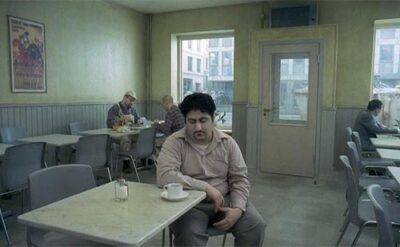
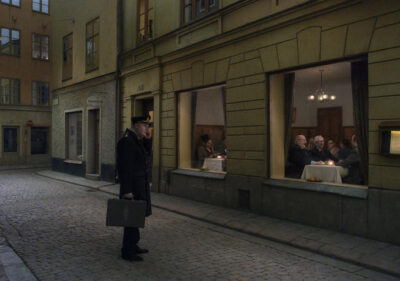
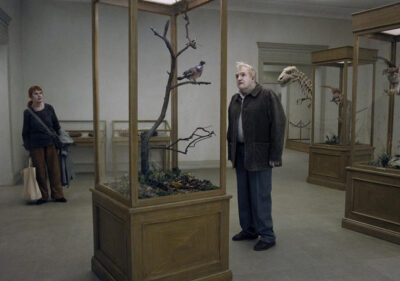


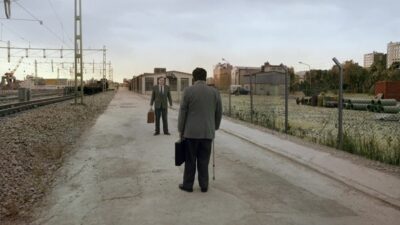

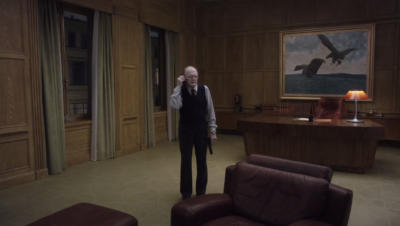


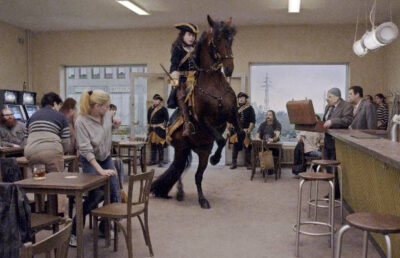





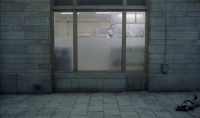
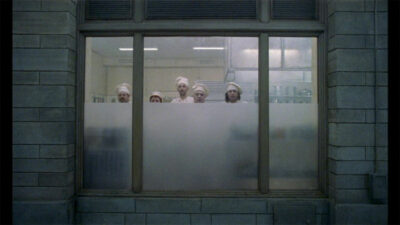
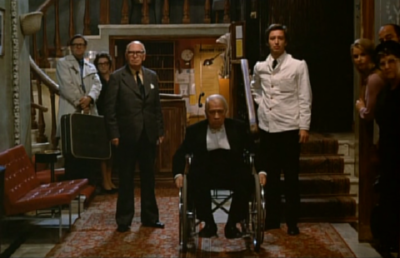





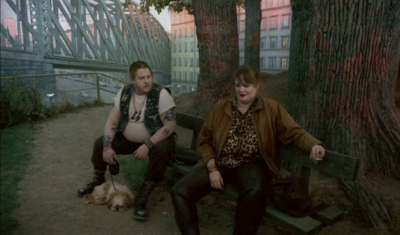
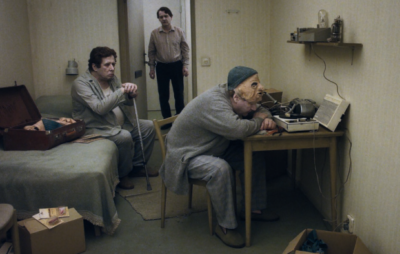
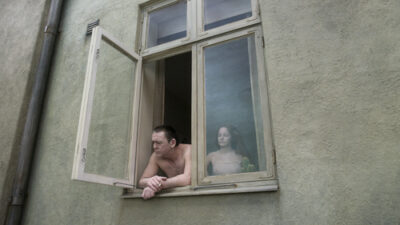




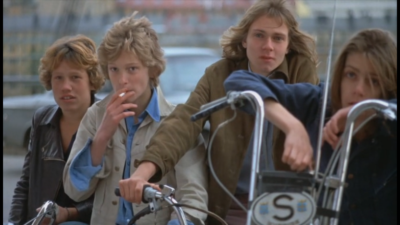

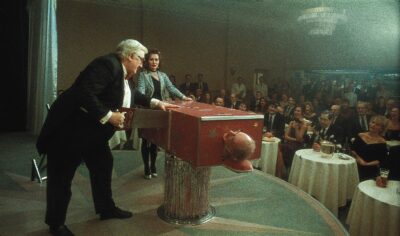
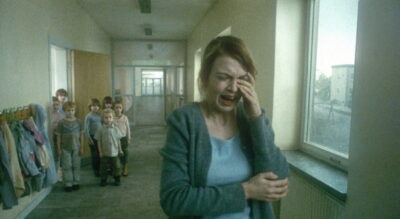
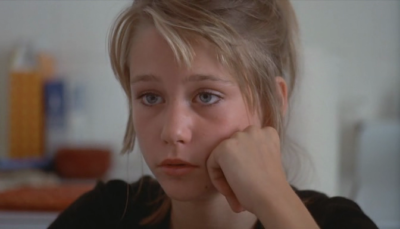
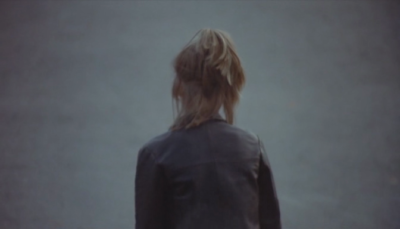



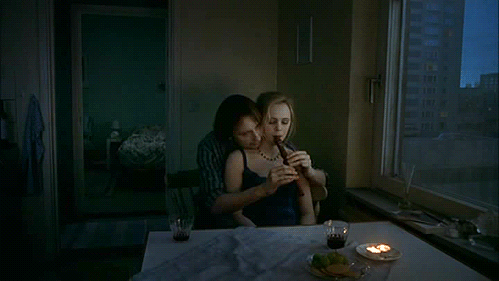
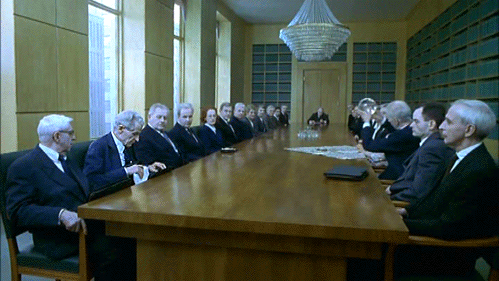
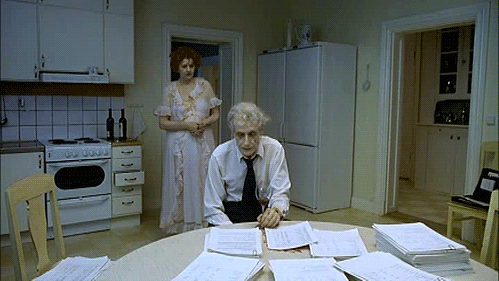




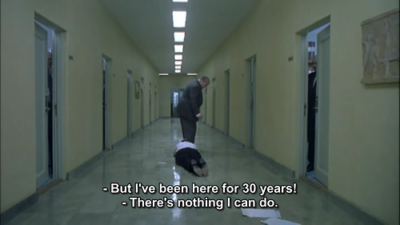

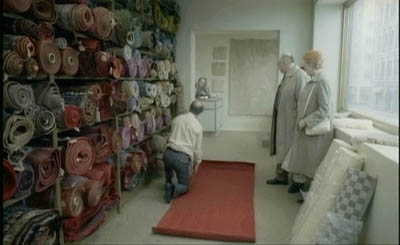
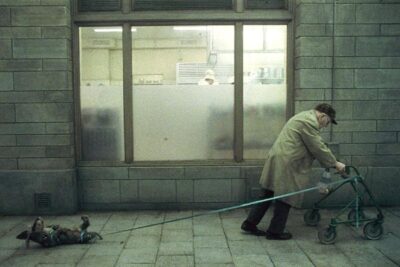

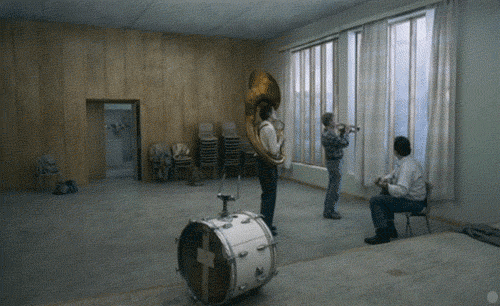
____
Further
Roy Andersson Film Production
Roy Andersson @ IMDb
‘Roy Andersson: “I’m trying to show what it’s like to be human”.’
MoMA | Filmmaker in Focus: Roy Andersson
Roy Andersson Official @ Facebook
‘No one—really, no one—makes movies like Roy Andersson’
‘This movie will make you smarter’
‘Interview: Roy Andersson’
Roy Andersson @ MUBI
‘The Hidden Dimensions of Roy Anderssons Aesthetics’
‘Roy Andersson’s Cinematic Poetry and the Spectre of Cesar Vallejo’
‘The return of the slapstick Ingmar Bergman’
‘On the Verge (of the End): Roy Andersson’
‘Watch: How to Build a Beach on a Soundstage’
‘You Have to See… You, the Living’
‘It’s Hard to be Human: The Cinema of Roy Andersson’
‘Culture Whisper Interview: Swedish Director Roy Andersson’
‘Roy Andersson: The Swedish Art Director That Could’
‘A Unique Universe’
‘Life: Perplexing, Painful, Precious’
‘In the light of darkness
– a note on Roy Andersson’s influences’
‘Roy Andersson and his View of the World’
Roy Andersson’s 10 favorite movies
____
Commercials
‘Meticulously planned and often delivering a surprise ending, it’s easy to recognize a Roy Andersson commercial. He tends to focus on working class people in typical everyday situations somehow being screwed over by fate. Andersson uses a lot of what he calls “no mercy” lighting. He shows his audience exactly who the characters are, what they look like and what kind of world they live in. All flaws intact, Andersson gives his characters no place to hide. This is pretty much the standard for Andersson’s commercials. Andersson’s shooting style is very clean. His shots are set up much like a painting; everything you see in the shot is there for a reason. Otherwise, why shoot it? From the characters to the props to the actions, everything has a function and serves a purpose. Andersson consistently demonstrates extreme patience and complete control over his sets.’ — HP
collection, part 1
collection, part 2
collection, part 3
collection, part 4
_____
Interview
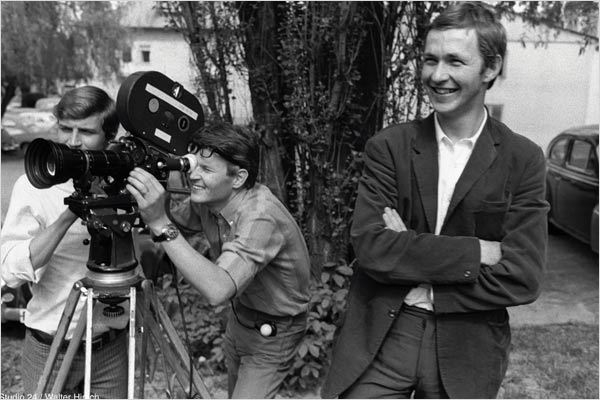
An Italian photo editor shot a fashion story inspired by your film A Swedish Love Story. He says he’s been obsessing over it ever since he first saw it.
Roy Andersson: I’m happy because that film seems as current to young people today as when I first made it. I guess it’s because themes like dreams and disappointment are timeless.
What inspired you to make the movie?
RA: I got the idea when I was assistant director at the set of Bo Wideberg’s Ådalen 31. At the hotel I found a women’s magazine with a picture of a 13-year-old girl wearing a knitted sweater. It radiated innocence and life optimism and I wanted to convey that onto film, and contrast it with the adult generation’s broken dreams. For the young generation in A Swedish Love Story—Pär and Annika—it’s about finding somebody to like. But the film is also about loneliness, which is most apparent in the portraits of Pär’s grandfather and Annika’s aunt.
That contrast works, you feel almost ill at ease watching it.
RA: That’s because you witness people humiliating themselves and each other. Humiliation is a subject I keep coming back to in all my films and it exists in every social group. What I essentially want to show is the vulnerability of the human being.
But A Swedish Love Story is also an idyllic portrait of first love. Who was your first love?
RA: In first grade I was in love with a classmate, her name was Mona. But she never knew.
Are you a romantic person?
RA: No.
Still you made a film that left me all starry-eyed and the imagery is beautiful. But it’s almost scary how Swedish it feels.
RA: That’s funny because at the time I was actually influenced by the Czech New Wave. Films like Loves of a Blonde and Closely Watched Trains were being shown at Swedish cinemas in the 60s and I was fascinated by how directors like Milos Forman, Jiri Menzel and Ewald Schorm managed to make the non-peculiar things in everyday life seem special by using a tender and humoristic tone. I wanted to recreate that ambience by using backlight and high focal lengths but towards the end I stepped away from that and closer to the imagery I use today.
Yeah, your style is very different now.
RA: My current aesthetic is inspired by expressionist and symbolist paintings, with the background depicted as carefully as the foreground. I find wide motifs more interesting than close-ups as they’re in depth and tell the story of people’s situations. It fuels my imagination and, by using such images, it becomes a film about human conditions, captured with a fixed easel or in my case a camera.
How did the idea of becoming a filmmaker come about?
RA: When I was 12, they showed Vittorio de Sica’s neorealist The Bicycle Thief at my youth centre. I think it’s the most empathic, human and intelligent film ever made. I was so moved by the fact that there were people out there who had taken upon them to make a film, told with such warmth and love of humanity, about socially unimportant people, like an unemployed family father being robbed of the bike he needs to get a job. It definitely influenced me to become a filmmaker.
Do you think growing up in the 50s or the “armchair decade” as you call it, made you socially aware?
RA: I grew up next to Gothenburg’s three big boat yards and, as I remember, they were never inactive. All I ever saw was hard working people and, with Europe having been bombed to pieces, business was good. But even though the welfare state was expanding and everyone had great faith in the future, there were still many injustices. I was impatient and wanted the process of equal rights and possibilities for everyone to go faster.
How come you only made two films in the 70s and then it took you 25 years until the next?
RA: My second film Giliap was a real fiasco, both audience and critique wise, and in addition to that, it had exceeded budget. I became the scapegoat and was left out in the cold. Only ad agencies would still get in touch, so I started making commercials in order to survive.
And now you’re one of the most renowned Swedish commercial directors. But considering you’re somewhat of a social activist, aren’t commercials against your principles?
RA: I’ve often been criticized for doing commercials but in my eyes, as long as you accept some kind of market, which I do, you also have to accept advertising. My commercials often take place in ordinary environments with ordinary people and with a splash of humor and distance. I work as meticulously on them as on my feature films.
Has that affected the way you make films?
RA: Doing commercials has allowed me to develop my aesthetic. Above all, it has taught me that a fixed image with no cuts communicates more effectively than a panning camera and hysterical editing. The latter is often a result of ill-considered or badly planned scenery. My commercials have been successful and have made it possible for me to build up my own production company and a studio with all the necessary equipment. I can now make movies again and this time irrespective of other producers.
It must take ages and cost loads to build up your distinctive settings.
RA: Yes, and to people who aren’t involved there’s a lot that seems crazy. When we built a full size train station for the recording of Songs From the Second Floor, a couple passing by looked into the humongous hangar and asked what went on. When they heard we went through all that trouble only to record a single movie scene, they couldn’t understand why we didn’t just use a real station instead. They got the answer that this would look much better. They were quiet for a while and then the man asked what would happen in the scene that required such a huge construction. When the answer was that it would feature a man squeezing his finger in the door, the couple left without a word.
That’s pretty funny. What makes you laugh?
RA: I’m amused by children’s or animals’ unadulterated behavior, but also by people’s odd character traits and ingenious formulations. I’m also very fond of practical jokes but my best one was never carried through.
What was it?
RA: When we recorded Ådalen 31, Bo Wideberg used his valuable Matisse collection as props in the setting for a factory owner’s mansion. One day we filmed at another location and a school class was given permission to visit the mansion, as it had historic value. The idea was to take the graphic sheets out of the Matisse frames, copy them and draw on the copies with crayons and write thank you’s from the children. I still wonder how he would have taken it, that Matisse collection was the apple of his eye.
Your comedies make fun of people’s desperation. Do you ever get a bad conscience?
RA: You might find them cruel at times but beneath the surface lies a very sad heart. Behind it, there is responsibility and love. It’s a protest.
Has that ever been misunderstood?
RA: When Songs From the Second Floor was shown in Stockholm, it was quite common that people in the audience rushed up to the ticket office and bawled at the staff about such a film being shown at all.
So it works then, you trigger people.
RA: I wouldn’t want an indifferent audience. Elie Wiesel said it best, “The opposite of love is not hate, it’s indifference.”
Rumors say Ingmar Bergman told you to never make another film after Giliap, I thought that’s why you didn’t make films for so long.
RA: That’s not true, but he did threaten me once when I was in film school. He was an inspector there and disliked left wing filmmakers, a field I felt I belonged to, mainly because of the unjust Vietnam War. I had filmed anti-war demonstrations with my yearly film quota and was called into Ingmar Bergman’s office. He told me that if I continued with that I would never get to do feature films.
But it’s well known that you two disliked each other.
RA: Let’s just say that I was never invited to his Fårö estate, which many other students were, and that I had no respect for him. To me, his aloofness was unacceptable. This was when the old authoritarian society was falling apart all over the world and Europe was loosing their colonies due to growing resistance movements. Still, Bergman was making apolitical films.
MoMA just put on a retrospective of your work.
RA: Yes! And I even agreed to let them show my school films that I don’t like that much.
What don’t you like about them?
RA: Back then I was more interested in focusing on a tone than on having a story. But the curator told me that New York is full of young dreaming filmmakers and that it’s inspiring for them to see how established filmmakers have evolved.
I read somewhere that you’ve decided to surrender and stop making films.
RA: I’ve actually decided to make another film. It will be a dynamic film with abrupt emotional turns called A Dove Sat on a Branch—and Thought About Existence. I’m in the midst of writing the manuscript. It’ll be about what doves are probably thinking about: “What is it that they’re doing, the humans?”
__________________
9 of Roy Andersson’s 15 films
_______________
About Endlessness (2019)
‘Maybe at the age of 78 he feels he’s approaching the end … of his career, of his life, of everything. Despite or because of it, Swedish auteur Roy Andersson has called his latest movie About Endlessness. And though this might not be his final film (a recent documentary hinted that he has been working on some new ideas) there is a paradox there. Just as he sees death looming up in the foreground, Andersson lifts his eyes beyond the finale of all flesh to the receding horizon of mysterious infinity, that minutely detailed distance that he always fabricates in his films.
‘About Endlessness is another of Andersson’s superb anthologies of the human condition: people with a zombie-white pallor enclosed in enigmatic tableaux, populating his utterly unique world of unreality and artificiality, scenes of tragicomedy inspired by Tati and Python and created with masterly model work and green-screen effects in the studio. He shows moments of all too human weakness, weariness, gentleness, bewilderment, despair; there are nauseating visions of war crimes, returning us to the genocidal horror he showed in his 1991 short film World of Glory.
‘Yet there are also scenes of hope, compassion and love. A wizened old man in a bar, whose windows show a glorious vista of snowfall, declaims to a roomful of strangers that it is “Fantastic … fantastic!” He’s right, though his rapture isn’t enough to convince the dentist we saw in the earlier scenes, slumped over the bar, his surgical mask now pulled down to his chin in proto-Covid exhaustion and misery.
‘And all of it has that unmistakeable compositional sense. I call it the Anderssonian Depth of Field. Striking images and poses happen under the camera’s nose, but the audience’s eye is led, as if on a rail track, out into the distance, to eerily mesmeric background scenes whose pin-sharp definition you find yourself inspecting for signs of independent life. In a church, on a bus, in a huge railway station concourse, there is enormous subsidiary pleasure in just noticing the background, which is as vividly alive as a waking dream.’ — Peter Bradshaw
Excerpt
Excerpt
Excerpt
________________
A Pigeon Sat On A Branch Reflecting on Existence (2014)
‘In the interval since his last film, Andersson has embraced hi-def digital cameras, which benefit his aesthetic enormously. Now, the helmer can ensure that even the far-distant background of every scene appears in sharp focus. Though the colors are dreary and the characters numb, compositionally speaking, there’s not a single dull frame in the entire film. Andersson thinks like a painter, following Edward Hopper’s example of enhancing loneliness by depicting it within a greater context. He shoots rooms at an angle, using perspective to direct our eyes toward the activity in adjacent rooms or on the other side of windows, instead of observing everything directly on axis, the way his similarly detail-oriented American namesake, Wes Anderson, insists on doing. In Pigeon, people go about their business in the dreary little boxes of their lives, but they don’t behave like marionettes on strings, but almost like actors on a stage, occasionally turning to address the audience. “Today I feel kind,” announces a cheesemonger, while his wife gestures to the audience to let us know she thinks he’s crazy. It’s unclear whether the shift to digital has allowed Andersson to manipulate his footage the way directors such as David Fincher and Ruben Ostlund do, using their locked-down cameras to make invisible nips and tucks. Regardless of the method, the film is a master class in comic timing, employing pacing and repetition with the skill of a practiced concert pianist.’ — Variety
Trailer
Day of Shooting. Oslo, Norway, June 2013
Day of Shooting, January 2013
________________
You, the Living (2007)
‘About half way into You, the Living, Roy Andersson’s brilliant comic dystopia, a psychiatrist walks through a waiting room packed with patients before entering his office, at which stage he delivers a thoroughly bleak assessment of the human condition. He has been a psychiatrist for 27 years and his profession has completely worn him out. “People demand to be happy at the same time as they are egocentric, selfish and ungenerous,” he says matter-of-factly. “I’d like to be honest and say they are quite simply mean, most of them. I’ve stopped trying to make a mean person happy. I just prescribe pills, the stronger the better.” The next time we see him, he is stepping out of an elevator to leave work and he holds his hand to his heart. Not only has the doctor not healed himself, he looks as defeated as his patients claim to be. He is a one-man Bleak Chorus. You, the Living takes its title from Goethe’s Roman Elegies, 1790, in which readers are reminded to appreciate whatever good fortune they have because it most assuredly won’t last. “Be pleased, you living one, in your delightfully warmed bed, before Lethe’s ice-cold wave will lick your escaping foot.” Lethe, the River of Oblivion, flowed through Hades, and in drinking its waters the shades of the dead forgot their earthly lives. Given the unrelentingly bleak outlook of the characters in the film, you could easily think that slaking themselves on such a tonic would constitute good advice. For the most part, whether screaming about their husband’s tuba practice, or yelling racist insults in a barber shop, they lead lives of noisy desperation. Characteristically, Andersson has a bit of fun with his own filmic epigraph. In the ninth of the 50 short scenes that make up You, the Living, a commuter train stops and the passengers begin to disembark. The air is thick with mist and the mood somber, but the emptying out is ridiculous; so many people pile out of the train that you’re reminded of a Volkswagen Guinness World Record gag. The joke is classic Andersson, a filmmaker who seems a cinematic first cousin to Buster Keaton, Samuel Beckett and Eugene Ionesco.’ — Border Crossings
Excerpt
Excerpt
Excerpt
_________________
Songs From The Second Floor (2000)
‘Songs From The Second Floor, which had its world premiere at the 2000 Cannes Film Festival, was the first film he made in his mature style. (His first two features, 1970’s A Swedish Love Story and 1975’s Giliap, are much more conventional. It took him a quarter-century to re-emerge on the big screen.) It consists of 46 shots/scenes, any one of which would work beautifully for this column. Masochistically, I’ve chosen to discuss the one that I have no idea how he achieved. Though the film’s narrative is sparse and oblique, it gradually becomes clear that something apocalyptic is going on; we meet a number of odd characters (all played by actors chosen primarily for their atypical physiognomy), then watch as the world seems to go to hell around them. The wealthy and powerful, it seems, have made plans to escape—it’s implied that this involves leaving the planet entirely, somehow—and near the end of the film they’re seen at what we might as well call an airport, though it only vaguely resembles any check-in area in the real world. Whatever frustrations you’ve experienced standing in lines, it’s a walk in the park compared to this nightmare.’ — The AV Club
Excerpt
Excerpt
Excerpt
______________
World of Glory (1991)
‘A plain, ordinary man tells us about his work as a real-estate broker, his dead father, his ordinary home and so on in a naturalistic voice, lacking any emotions, looking straight into the camera.’ — Mattias Thuresson
the entire film
______________
Something Happened (1987)
‘In 24 absurd scenes, Roy Andersson illustrates various aspects of the crisis surrounding the AIDS epidemic. The film was commissioned by the Swedish National Board of Health, which disowned it, and was not distributed until several years later.’ — Cinematheque Quebec
Excerpt
______________
Giliap (1975)
‘Roy Andersson premiered his second feature-length film, Giliap, in 1975. The film is a marked departure from A Swedish Love Story, and that is no accident. Success brought pressure onto Andersson to make A Swedish Love Story II. But he didn’t want to be someone who churned out yet another film in the same spirit, and then one more… So he changed style drastically in Giliap. Andersson had great hopes for the film, but it found neither a public nor positive reviews. Giliap did, however, win a larger reception abroad, especially in France. Yet despite its meagre successes in Sweden, the film is interesting, not least aesthetically. For here one finds the first seeds of Andersson’s distinctive film style. In Giliap, actor Thommy Berggren plays a wandering day-labourer who takes employment at the fading Hotel Busarewski. The hotel is run by a wheelchair-bound misanthrope who harshly deals out orders to his staff as he reminisces about Busarewski’s former golden days. In this film Andersson introduces his social criticism in a more nuanced and stylised manner than before, and strikes a tone for his future work. The symbolism in the film is compelling; the powerlessness that the three main characters feel in their work and their living situations reflects a hopeless society in miniature. They are entirely trapped within a hierarchical order.’ — Worlds Cinema
Excerpt
A tribute to “Giliap”
_______________
A Swedish Love Story (1970)
‘Roy Andersson made his first film in 1970, a tale of adolescent love set against the backdrop of a cruel tableau of the petite bourgeoisie wedged between conformity and frustration. Rediscovered now, A Swedish Love Story (En Kärlekshistoria) shows the inauguration of a critical gaze that has never deviated from its just distance. Fifteen year-old Pär (Rolf Sohlman) and fourteen year-old Annika (Ann-Sofie Kylin) fall in love: around them swirl parents, friends, rivals – a series of microcosms which evoke a society apparently permissive, but secretly in tatters. According to a type of approach which the filmmaker will systematise in his subsequent works, the film proceeds in large, almost autonomous sequence-blocks, beginning with a visit involving the families of both adolescents to their close relations in a nursing home (this is, in fact, where the youths first meet), and ending with a party in a country estate where Annika’s parents are received by Pär’s family. A Swedish Love Story, in its manner of elaborating only the subtlest tones, never descends into caricature. Even the most pitiful characters are not left as mere cartoons; they retain a tragic humanity, and their ordinary drama is not just a demonstration of existential absurdity. In this light, Annika and Pär, in their awakening love, might be able to hope for some meaning in their lives.’ — Positif
Trailer
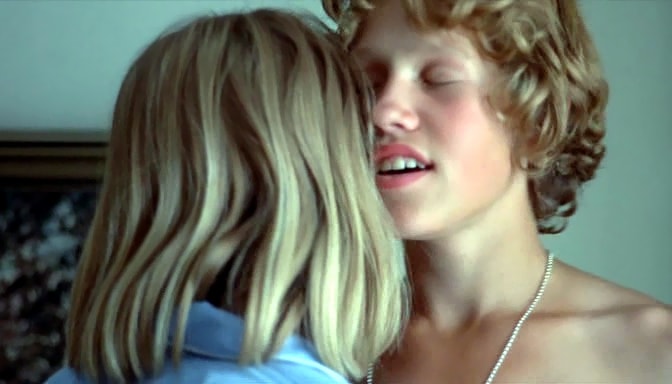
_____________
Saturday October 5th (1969)
‘Roy Andersson’s third student film project. Using the type of loosely connected storytelling structure that is later found in A Swedish Love Story, the film follows a young man during 24 hours and relates his relationships with his mother, his girlfriend and friends.’ — MUBI
Excerpt
*
p.s. Hey. ** Jamie F, Hey, Jamie. That comparison is one of those things where the more you think about it the less it makes any sense at all and the better it gets. But I love the idea that the author had thought out the full implications of his metaphor and couldn’t think of a more accurate descriptor. Laziness is only useful when your writing is excepted from it. But then I guess it isn’t actually laziness. Never mind. Yeah, it sounds we’re on the same writer page. Works for me. Super important to be supportive, I think. How is your friend’s novel if you can say? No, I only saw the ‘CMBYN’ film, I haven’t read the book. Is it better than the film? (I didn’t like the film). Thanks, bon day! ** Lucas, Howdy, Lucas. You should read the escort profiles before I edit them. They were two or three times longer for one thing, Maybe I should get a job as the literary advisor to horny guys trying to score online. June, that’s soon. Three more years though, wow. Germany is serious. But I assume their education system is probably fairly stellar and a help? The 9th arr. shouldn’t be too bad, Olympics crowds-wise, if you come. There’s no sports happening there. If you come, hit me up if you want meet and have a coffee or something. I’m in the 8th arr., pretty close. Thanks about the film. We’re in a big mess at the moment, but we’ve been in many of them, and they always pass eventually. I too am curious about the ‘Queer’ film. Daniel Craig being the star is very strange but potentially very interesting. We’ll see. How is your week proceeding so far? ** _Black_Acrylic, Ha ha, yes. I guess he’s hoping for some rich dude to import him to where the waves are. Yesterday was a shitty day with big film shit going on, but PT is cued up to insinuate me into my day ahead, so no more delays. ** Dominik, Hi!!! Yeah, right? Because, like, wizard’s sleeves are about things coming out of them not into them, am I right? But maybe the writer was hinting around at the escort’s voluminous prolapse? Prolapses are kind of like fancy sleeves, I guess? No one’s mentioned this, but I have to add unequivocally that [love] has amazing landscaping and cleaning skills! He can also cook and fully service a swimming pool! Jesus!, G. ** Justin D, Hi, J. I know, bringmethere is/was such an amazing bargain. Yeah, me too re: the ultra-hyped. I still haven’t seen ‘Poor Things’. Its hype still has a bit more dying out to do before … How was your day today, for instance? ** Oscar 🌀, Hi, O. Really, surfing’s a thing in Glasgow? That’s interesting. Glaswegians are dreamers? I don’t think having a dog is a Parisian thing. Really, they’re so rarely sighted. It makes sense since living quarters here and pricey and not immense for the most part, but still. Same deal with NYC, but you can’t walk half a block there without either seeing a dog or stepping in its poop. I’m assuming Parisians are cat people. Or maybe parrot people? I think the hardback FLUNKER is going to be pretty sleek and slim and okay other than the basic stiffness problem. Enjoy your today’s ride. ** Sypha, Ah, okay, about that ritual’s practicality. Cool, because that doesn’t kill its lovely eccentricity. Anytime you’re ready to do a Batman Day, the blog is and will remain hungry and plaintive-eyed. You diva! I don’t think I even know what the Pleasant genre involves. Maybe I can guess. Surely one of those Neo-Decadence adjacent presses would be into it? Good, I’m glad you’re in one of your very productive phases. Always the best times. ** Steve, Here’s hoping the canal process is easy. Mine took three visits, but they weren’t time consuming. I’ve come across escorts and slaves who mention they work in haunted houses or at Universal Horror Nights a few times, but I think that’s it. It’s a fetish waiting to happen. Does SOPHIE have anything to do with Sophie? Thanks, I’ll visit that article. Sounds very instructive. Thanks! ** Harper, Hi. Oh, right, ‘Castle Faggot’ kind of has the French monster thing nailed down. I still think that might be the best novel ever. The New York Times Book Review would disagree. I’m doing a reading with Derek in NYC in October. I’m excited. I liked Ashbery’s Rimbaud translation. But I’m such a massive Ashbery fan, so … My favorite translation is Enid Peschel’s, but, yes, it was the first one I read. I speak very piss poor French, so I’m no judge at all. I know it’s supposedly much easier to translate French lit into English than vice versa, they say. That doesn’t sound dumb at all: Toto the dog. So the escorts, or at least one of them, had a successful blog day yesterday. Yes! ** Dom Lyne, Hey, Dom! Stuff’s mostly good if not entirely, but such is life. That’s great about your audio-play getting so close. Our film almost got into the Cannes Film Festival, and that’s almost as good a bit of news as getting in. You sound busy good, which is the best kind of good. The film is virtually finished but for several days’ final polishing, and it’s currently waiting for yeses or nos from a few film festivals. Hugs and love right back. ** Corey Heiferman, It was a pretty solid quip fest this month, yes. I think you should take over the Marco Vassi Day assignment if you want because I think otherwise it will die on my vine. I used to spend every summer as a teen on Maui, Hawaii, which is beach central, and it had its charms other than severe sunburn a couple of times, but, if I have my druthers, I like beaches only at night or maybe dusk. Maybe. ** Right. I am very fond of Roy Andersson’s meticulous, melancholy, amusing films, and I am sharing him with you today. See you tomorrow.




 Now available in North America
Now available in North America 
hi dennis,
this director seems really interesting, I’ve never heard of him before. just added a pigeon sat on a branch reflecting on existence to my watchlist thanks to you. on the topic of swedish directors, can I say I don’t love bergman as much as everyone? I’ve only seen winter light and persona, and I wasn’t as impressed as my friends by the latter. sure, amazing visuals, etc. but it struck me as kind of preachy and overly self-serious in a way that just reminds me of the specific dullness of some old northern europeans I know and hate. I mean I guess things couldn’t have been that fun for them lol to be fair
on the education system here, it’s more or less good, I think I just had bad luck being stuck in a shitty school with shitty people, the new one I’ll be going to seems promising
good to know that of paris will be okay and I’d love to meet you though I’m very painfully shy as a heads up. I hope we can work something out. I’ll be going there with my mom and I still need to talk to her about when we’ll even be going specifically and all that stuff
my week has honestly been pretty shitty so far, thanks to finals and having a lot more stress at home than usual. it’s shaping up to be better though, I have therapy tomorrow and after that I’ll be watching a random twin peaks episode with a friend over discord talking to you cheers me up a lot, too. how’s your week going, is there anything you’re looking forward to on the weekend?
well nevermind, turns out I’ll be rewatching fire walk with me tomorrow. can’t complain, it’s something I like to watch when I’ve had a bad day anyways
Hi!!
So, some research seems to show that the phrase “wizard’s sleeve” is used to refer to an overfucked vagina – one that’s loose and enlarged and has floppy labia. Now we know. (Although I think your idea involving the prolapse was way more creative.)
I peeked at today’s post while taking a break from work, and now I’d really like to watch “A Swedish Love Story.” Thank you, again, for including the whole movie!
Jesus! Love just has every skill one might wish for, doesn’t he?! Also: if you meet love, be prepared for someone a little obnoxious, unexcitable, and plenty weird, Od.
Hey Dennis 😊
I find it funny to think of the guys on those image boards as tortured artists, wrangling with metaphors, haha.
I’ve seen the film CMBYN, technically. I was drunk at the time and I don’t remember much, so not sure if it was anything like the book. I liked the book CMBYN when I first read it. The theme of obsession/desire is done well if I remember, how the kid pursues the older guy, kinda desperately. Also, the characters don’t consider themselves gay. I would recommend it for you I guess. Then again, I haven’t re-read it and I may think it sucks now and then feel like an idiot. Might be a bit ‘sappy’ for you, if that’s the word.
My friend’s novel: I want to like it, and I want to say something nice about it, but I’m struggling with it! I think it has potential but it isn’t to my taste perhaps, it feels quite ‘meh’ and by numbers. There is a villain character and I prefer the parts of the book written from his perspective, haha, so I’ll mention that to him I guess!
I actually really like novels that seem near-impossible to make into films. I think that’s a sign of quality for some reason, hah. Self-aware enough of the written word as its medium, like novels that use introspection etc.
This is a wild card but I wanted to ask, have you ever read Notes from Underground by Dostoevsky? Kind of random, I know, but that book triggered catharsis in me so hard, almost as hard as your books triggered catharsis in me — so I wondered if you’d read it.
Pigeon Sat on a Branch seems like my thing haha, I like when filmmakers explore what it means to be human, it’s a great subject.
I’m sending cool and easy vibes your way so everything goes smoothly with the film and it gets accepted into all the festivals.
P.S.
Hi Harper! If you see this… say hi to me!?
I’m a definite fan of Roy Andersson. Will have to go back and revisit his ‘Living’ trilogy, inspired by today’s post. About Endlessness I’ve yet to see, and am greatly looking forward to that one. Something about his work seems to chime with my own sense of humour, which I find to be a rare thing.
Hi Dennis,
My name is Cletus Crow and I’m a big fan of you and your blog. I’m going to be upfront, so I wrote a poetry collection largely inspired by Dream Police. Although it’s much more low brow. Some of the poems/short cnf have been in SCAB, Hobart and Forever Magazine which I know you enjoy. I don’t want anything from you, I just want to share the book with you cause I like you and you were an inspiration. It’s going to be published June 7. Lmk if that’s interesting to you/if you’d like to have it.
I adore Roy Andersson. I can’t believe I didn’t hear of him until a few years ago, and it was by accident that I came upon one of his films. I really, really love his work.
I was able to get the root canal pushed up to tomorrow. Yay!
Have you heard from anyone who’s attending Cannes? MEGALOPOLIS screens tomorrow.
I’m referring to the singer/producer SOPHIE . A few years before her death, she released a pack of samples created with the synthesizer she used to make her music’s harsh metallic sounds. For a long time, you could only download it by signing up to a monthly subscription service, but someone has now posted the sample pack on archive.org.
I’m reviewing the new Billie Eilish album for Gay City News, although recovery from surgery will probably mean I can’t start writing about it immediately. Interscope has not released any singles, athough very brief snippets of several songs have leaked, and her publicist would not let me hear it in advance. I wonder where she’s headed.
Dennis, well, re: COMETH DARKNESS, the first press interested in doing it went a whole year without giving me any progress reports at all as to how it was going, even when I asked (which was just twice, deliberately spaced 6 months apart, so it wasn’t like I was pestering them constantly). Then the second press wanted to use as cover art what looked like a Thomas Ligotti cover run through an AI program, so that simply “wasn’t on.” The third one had actually published me in the past and was usually pretty chill about letting me pick the cover art (unusual for a publisher, needless to say). I told them I wanted to use a drawing by Gea Philes, but they said it wasn’t commercial enough (incidentally, you should see some of their recent ideas as to what constitutes commercial cover art… hardly edifying stuff). That’s the one I pulled my diva trip on heh heh… oh well.
The Pleasant is pretty simple, it’s mainly short stories where good things happen to the characters and there’s very little conflict or drama involved. To give an example from my own book, I was thinking about that old OREGON TRAIL computer game, and how the game is full of bad things that can happen to your traveling party: broken bones, rattlesnake bites, cholera, dysentery, drowning in rivers, and so on. So then I thought, “Hey, what if I had a story about a family that travels the Oregon Trail and only good things happen to them, and nothing bad or exciting happens?” So that was the genesis of my “Super Uneventful Oregon Trail” story (which ended up being Justin Isis’ favorite in the collection, incidentally).
Hey hey hey!
Never heard of Roy Andersson, so this was a cool read/look/watch! My knowledge of anything Swedish save for ABBA is pretty slim, so I’ve put some of his stuff on my watchlist!
Yeah, that makes sense about the dogs in Paris. Parrots kind of freak me out (there’s just something not quite right about them — sorry if you’re a secret parrot person), but I do have a soft spot for cats. My cat actually tried to eat my copy of The Marbled Swarm today while he was having zoomies, so, y’know, I guess that means it’s a hit with him? Are you an animals guy at all (pleasepleaseplease don’t say parrots)?
Also do you have any songs stuck in your head right now? Just realised I’ve been listening to Sleepyhead by Passion Pit for around 2 straight hours, so probably time to put the brakes on that one before I put myself off the song forever.
Hope your Friday morning prior to you reading this has been appropriately funky.
Hey Dennis. Don’t get me wrong, I love love love Ashbery, I just think that we might like different things about Rimbaud. I haven’t figured out what those things are yet but I might be getting closer to understanding.
That’s cool about your reading with Derek McCormack, but sadly not surprising that a lot of critics don’t get ‘Castle Faggot’. I think I remember that you or Zac in the afterword to the book said that it was too good for adults, and I kind of agree. There’s so much imagination in it that adults have been taught to supress and therefore don’t know how to react to it.
Also, I had a funny thought. You know you make lists of like your favourite books, music, movies etc., have you ever considered doing the Dennis Cooper list of your least favourite things? I know that would probably be a bad idea if the creator of the thing is still living and is your contemporary, and may come off as petty or something, but perhaps it would be different if all of the creator’s are dead or have no proximity to you? Also if its like, least favourite buildings or something, then its kind of different. Yeah, probably a bad idea, but would be interesting.
RE: Roy Andersson, I did see his short ‘World of Glory’ the other day and didn’t realize how established he was. For some reason I assumed it was by a new director. It was very striking; I’ll have to delve deeper.
Hey, Dennis. I wasn’t familiar with Roy Andersson’s work at all, so thanks for the intro. My day was OK. Bit of work this morning followed by some yard work (ugh). I also watched this film from 2017 called ‘And Then I Go’. It’s about a boy in junior high school who is bullied/depressed and with the help of another alienated boy, they plot their revenge on their classmates. Apparently, it was an adaptation of a novel from 2004 by Jim Shepard. I wasn’t expecting it to be so moving/powerful, but it was. Have you seen it? I’m thinking of going to Powell’s tomorrow. Haven’t been to a book store in ages. How was your day?
Flunker & Fun to be Dead! My debit card is getting a workout – hahaha! We are doing the LA Zine Fest in June and working on new zines about Kid Congo Powers and Gregg Araki. We’re also going to Chicago for a few days in early July. Do you know Caroline Rose? https://www.carolinerosemusic.com/ I saw her two weeks ago – it was a rad show!
I always feel a little odd because I did so enjoy CMBYN (and everybody I admire did not) but also I watched it way back in middle school so it’s maybe it’s one of those things that persists as a capsule of your experiences/emotions from when you first engaged with it. A lot of my middle school things are like that, where I probably wouldn’t enjoy them if I got to them today but did then and haven’t fully flipped. Dickens also comes to mind. My mother sent me a poem I wrote a decade ago, and all I can say is I’m very glad I stopped writing poetry.
I also do like Under Attack! Songs with exclamations in their choruses are always fun. Have you ever seen Fassbinder’s Berlin Alexanderplatz? I have to confess I’ve never gotten to watching the whole thing together but I really want to. Not for any good reason; just feels like a rite of passage.